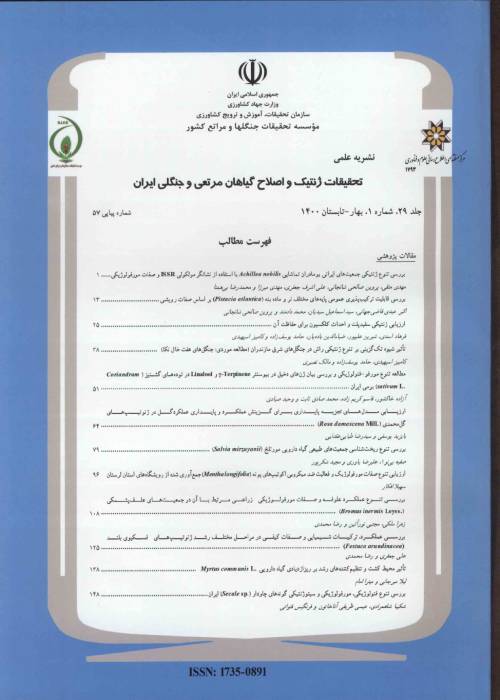Investigation of morphological and ecological and essential oil content variation of some populations of thyme species (Thymus spp.) in the northwest and west of Iran
Thymes are native plants of Iran and are considered as the most important medicinal plants due to their unique properties. In this study, morphological, ecological and essential oil percentage variation of 15 thyme populations (eight populations of T. kotschyanus, three populations of T. migricus, two populations of T. fedtschenkoi and one population of T. fallax and T. pubescens) from natural habitats of the northwest and west regions of Iran, were studied. For essential oil measurement, the flowering shoots of the populations were harvested during flowering season and the essential oils were extracted using Kelevenjer apparatus by distilled water for three hours. By examining the soil characteristics, climatic parameters and geographical position of the habitats, it was found that despite the geographical proximity, there were significant differences between the locations in which thymes were collected. This, along with genetic differences among the populations, led to a remarkable variation for all measured traits. There was negative correlation between essential oil percentage and inflorescence length. Using principal component analysis, the first three components explained 85% of the total variation. Using cluster analysis, the 15 populations divided into three groups. The populations in the third group had the highest values for most traits followed by the second and the first groups, respectively. According to results, Ghoghjeh population had the highest values for morphological characteristics. There was also a significant difference among the populations in terms of essential oil content. The essential oil percentage of the populations ranged from 0.92 to 2.82%. The highest values of essential oil 2.82%, 1.9% and 1.7% were obtained from Sardasht, Qushchi and Naghadeh populations, respectively. According to the results, the populations of Sardasht from T. fedtschenkoi, Qushchi from T. migricus and Naghadeh from T. kotschyanus had the highest essential oil content, and suggested for cultivation and using in related industries, pharmaceuticals, and improve breeding varieties.
- حق عضویت دریافتی صرف حمایت از نشریات عضو و نگهداری، تکمیل و توسعه مگیران میشود.
- پرداخت حق اشتراک و دانلود مقالات اجازه بازنشر آن در سایر رسانههای چاپی و دیجیتال را به کاربر نمیدهد.



